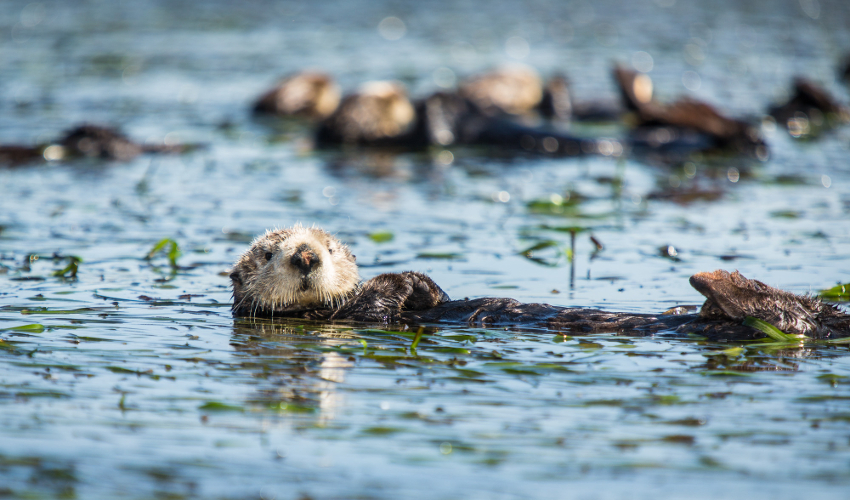Study shows potential for a sea otter resurgence in SF Bay

Sea otters in Elkhorn Slough, California. Photo credit: Robert Shea / Flickr (CC BY-NC 2.0)
Research by EOS Center scientists suggests otters could thrive in wetlands like those in the Bay Area
San Francisco Bay has seen a recent resurgence in marine mammal species, and new research by a team including San Francisco State University scientists suggests that there might be room for one more. Sea otters, the study shows, would find widespread food and habitat in the Bay — and could perhaps spread to other estuaries, too.
“We’re seeing that this is a paradigm that needs to shift — that estuaries are a good place for sea otters to live,” explained study co-author Katharyn Boyer, a professor of biology at San Francisco State’s Estuary and Ocean Science (EOS) Center. The team published its results in early December in the open-access journal PeerJ.
After being hunted to the brink of extinction for their fur, California’s southern sea otters were down to a single population of 50 in the early 20th century. That number has since risen to around 3,000, but the animal’s recovery has largely been limited to only a single kind of habitat.
“This little remnant population that was left after the fur hunting [ended] grew up in the kelp forests and has expanded in the kelp forest,” explained Boyer. A century later, the image of otters as a kelp forest species is cemented in the minds of many people — some scientists among them.
Before their decline, however, the otters’ range was much larger and included shallow, calm coastal wetlands like those along San Francisco Bay. And a modern reintroduction effort in one such area on Monterey Bay called Elkhorn Slough has shown that otters are able to thrive there, too. Their current home in the kelp forest might be nothing more than a historical accident. “It’s not a matter of preference is what we’re learning,” Boyer said. “That’s just where they started to come back.”
To better understand the potential for these habitats to support otters, the team performed an exhaustive survey of the habitat and food sources available in the Bay. They found plenty of both. In fact, the team calculated, the Bay alone could potentially support 6,600 southern sea otter residents, more than twice the number currently living in the wild.
That’s good news for the future of otters. And Boyer, whose team trapped crabs in SF Bay for the study to determine food resources available in the area, sees another important implication in the work: “It gives us yet another reason to care about estuaries, because they can provide these kinds of habitats,” she explained.
There’s reason to root for sea otters, too (beyond humanity’s love for all things cute and fuzzy). Otters help kelp forests expand, thanks to their appetite for kelp-munching sea urchins. Recent evidence shows they might play a similar role for important eelgrass beds in estuaries. “Otters seem to be beneficial to eelgrass, and eelgrass seems to be beneficial to otters,” explained Boyer.
Even if they were to make their way to the Bay, however, there’s no guarantee that sea otters would have the same positive effects on their environment there, Boyer says. And they wouldn’t necessarily get a warm welcome, as they’d have to contend with boats, oil spills and a litany of other stressors that come with sharing space with a few million humans.
Recognizing these barriers, the researchers aren’t pushing for a reintroduction anytime soon. But as populations of sea otters living south of San Francisco expand and make their way up the coast, they’ll find the Bay waiting for them. “I think that that could happen in places like San Francisco Bay and other estuaries all up and down the West Coast,” said Boyer.
SF State Professor of Geography & Environment Ellen Hines and master’s student Jane Rudebusch both co-authored the study. Other collaborators include researchers at Sonoma State University, Duke University, the Elkhorn Slough National Estuarine Research Reserve, the University of California, Santa Cruz, UC Davis, the United States Fish and Wildlife Service, the Monterey Bay Aquarium, Hakai Institute, San Diego State University, the National Parks Service and California Polytechnic State University, San Luis Obispo.